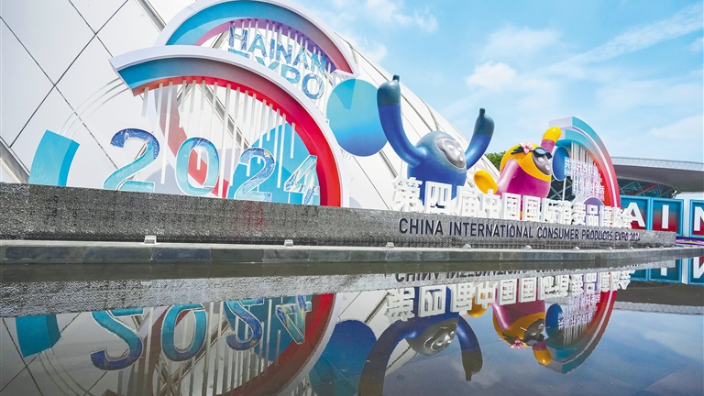By continuing to browser our site and use the services you agree to our use of cookies, Privacy Policy and Terms of Use. You can change your cookie settings through your browser.
The first time I posted on WeChat Moments was to share a photo of a massive pile of dragon fruit (also called pitaya) which I'd spotted in a local supermarket. I'd only recently arrived in Haikou and I found myself bewitched by this alien looking fruit.
I must have spent at least 20 minutes standing there, looking at, smelling, and touching the unreal abundance of fruit before deciding how many and which ones to buy.

For me, coming from a small countryside town in South Africa, to see so many of this red skinned leathery fruit in one place at one time was an unimaginable luxury. Even though my home is right in the midst of where majority of our agricultural products are grown, we are not a tropical nation and fresh dragon fruits were something I'd previously only seen on some Instagram health pages. Just a teeny tiny teaspoon of pitaya added to a nutritious smoothie as a pick-me-up would practically cost an arm and a leg.
I truly couldn't believe my eyes. I had to be dreaming. The price had to be wrong. But I wasn't and it wasn't.
In Hainan this fruit (which I mostly knew only as an ingredient listed on the back of expensive beauty supplements in the exclusive sections of pharmacies) was something normal and affordable rather than exotic and pricey.
That first year in Hainan, I ate so much dragon fruit. I made bright magenta colored smoothies at home. I made fruit platters with mango and pineapple. I learned that dragon fruit is a superfood and read all about its health benefits. It was wonderful.
For this episode of Lara Goes Local, we visited the pitaya orchards of Dongfang. All of Dongfang's dragon fruit plantations—and, in particular, those belonging to the North Latitude Eighteen Degrees Company—have been recognized at national level as producers of a special agricultural product.

The varietal grown in Hainan traces its origins back to Mexico. A combination of years of cultivation and trials on the part of local seed breeders and a natural environment, which boasts 2,700 hours of sunshine per year, has resulted in an extremely sweet end-product.
Adhering to the use of environmentally friendly approaches and “green” planting methods in order to ensure high quality fruit along with the application of mature off-season planting techniques, North Latitude is able to harvest dragon fruit year round.
The first thing I saw when I arrived at their plantation was a little girl playing on the road between the long rows of pitaya cacti trying to keep herself entertained during her weekend while her parents were working the fields. She reminded me a bit of myself - playing between the rows of corn crops on my friend’s farm when I was a little girl.
Due to the pandemic situation and restrictions, I haven’t visited my family back in South Africa for almost 3 years but snapshot moments like these serve to remind me of home.
Talking to her, the little girl confessed to me that she misses her big brother who is currently in their hometown. I replied, “I miss my big brother too.” As we walked together down the dusty road, her timid nature faded and some delightful little smiles brightened up her face.

Most of the farmers on this plantation are married couples responsible for a designated piece of land. The harder they work together, the more they reap both in terms of a greater harvest and a stronger marriage.
One couple taught me how to harvest dragon fruit – and I could tell by the expression on the man’s face that I wasn’t doing a very good job. Because of the recent typhoons and tropical storms, there were some good dragon fruit and some bad dragon fruit. Nonetheless, this couple’s enthusiasm wasn’t affected. They wake up each morning, embrace the new day, and group the dragon fruit according to their skin quality. Seeing the amount of hard work that goes into harvesting crops before they are neatly presented to us at the supermarket is really quite humbling to witness and supporting our local farmers while reducing my carbon footprint is one of the reasons I choose to buy local products, not to mention the thrill of being able to enjoy something that always felt beyond my reach.

A fruit that was once something I only dreamed of is now part of my regular diet. An island that was once so foreign to me is now the home that cradles me. And when I miss my family – I just need to come out and take a deep breath of that fresh countryside air.
16 New Measures Set to Make Life in Hainan for Foreigners Easier
08:10, 18-April-20244th CICPE Helps Hainan’s Yacht Industry Development
03:37, 18-April-2024New friends, new opportunities at the Hainan Expo
03:37, 18-April-2024Fáilte go Hainan! FTP Becomes Top Destination for Irish Firms
03:37, 18-April-2024Michael's EV Journey in Haikou
03:37, 18-April-2024OCOs on Expo: Inira’s magical Hainan Expo journey
06:01, 17-April-2024By continuing to browser our site and use the services you agree to our use of cookies, Privacy Policy and Terms of Use. You can change your cookie settings through your browser.





